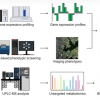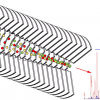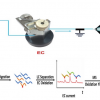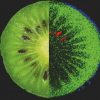Agilent Technologies has announced the acquisition of e-MSion, an early-stage company behind innovative electron capture dissociation (ECD) technology known as the ExD cell. The ExD cell is a compact device for mass spectrometers that enables biological researchers to develop biotherapeutic products more quickly. This is done by more comprehensively and precisely breaking the chemical bonds of complex biomolecules, enabling more complete, accurate and detailed structural information to be obtained from them.
The ExD cell is compatible with instruments common in many labs, which will make this powerful characterisation technology—previously limited to only a few high-end mass spectrometers—more accessible to a larger share of labs and biopharma researchers worldwide. The ExD cell enables electron capture dissociation (ECD) and other modes of electron-induced fragmentation in benchtop mass spectrometers. Because of its superior characterisation of larger proteins, protein fragments and their amino-acid modifications, ECD is preferred over other dissociation techniques including collision-induced dissociation (CID), which is the dominant methodology used today.












![Targeted proton transfer charge reduction (tPTCR) nano-DESI mass spectrometry imaging of liver tissue from orally dosed rat (Animal 3). a) optical image of a blood vessel within liver tissue. b) Composite ion image of charge-reduced haeme-bound α-globin (7+ and 6+ charge states; m/z 2259.9 and m/z 2636.3 respectively, red) and the charged-reduced [FABP+bezafibrate] complex (7+ and 6+ charge states; m/z 2097.5 and m/z 2446.9 respectively, blue). c) Ion image composed from charge-reduced haeme-bound α-globin (7+ and 6+ charge states) showing abundance in blood vessels. d) Ion image composed from charge-reduced [FABP+bezafibrate] complex (7+ and 6+ charge states) showing abundance in bulk tissue and absence in the blood vessel. Reproduced from https://doi.org/10.1002/ange.202202075 under a CC BY licence. Light and mass spectromert imaging of tissue samples](/sites/default/files/styles/thumbnail/public/news/MSI%20drug-protein%20complex-w.jpg?itok=CBNIjyYl)